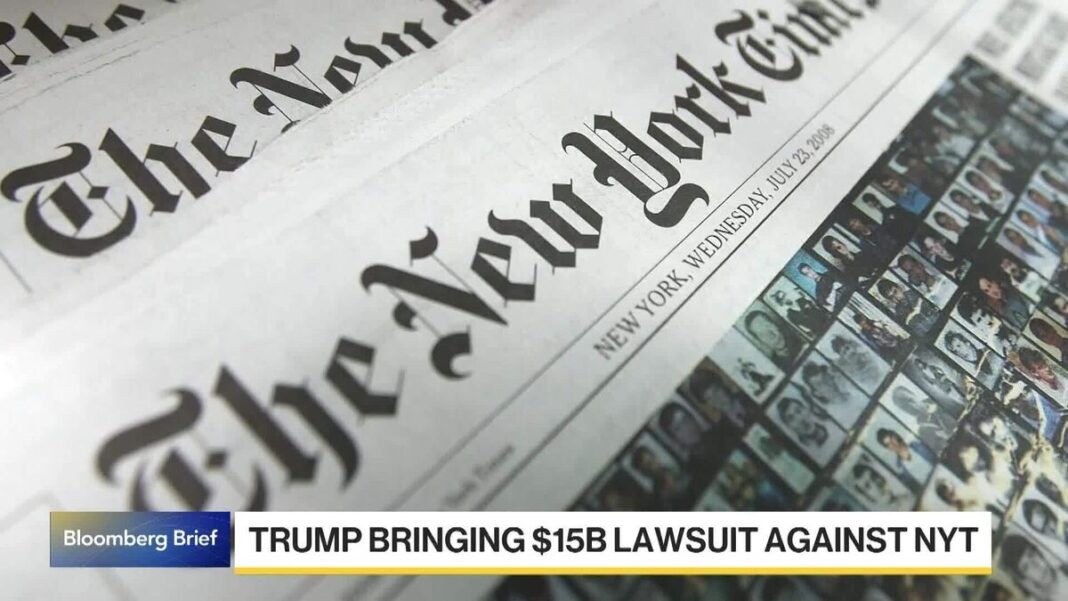Trump’s Defamation Lawsuit Against The New York Times: Key Details and Context
In a notable development in the ongoing tensions between former President Donald Trump and major media outlets, Trump has filed a staggering $15 billion defamation lawsuit against The New York Times. The announcement was made via his social media platform, Truth Social, marking yet another chapter in the intricate and often contentious relationship between politics and journalism.
The Allegations
Trump’s lawsuit accuses The New York Times of acting as a “mouthpiece” for the Democratic Party. The basis of the allegations lies in the assertion that the paper has consistently published false and defamatory statements about him, which, in his view, undermine his reputation and impact his business dealings. Trump’s legal team argues that the media has a responsibility to report fairly and accurately, and they claim The Times has failed in this duty by publishing biased narratives.
The Response from The New York Times
In direct response to the lawsuit, The New York Times has firmly rejected Trump’s claims, stating that the allegations “have no merit.” The paper emphasizes its commitment to journalistic integrity and insists that its coverage is based on thorough research and factual reporting. This defensive posture reflects a broader trend in the media industry, where outlets are increasingly challenged by public figures over narrative portrayal.
Context of Media and Political Tensions
This lawsuit is not an isolated incident but rather part of a larger narrative regarding the fraught relationship between Trump and the mainstream media. During his presidency, Trump often labeled various news outlets, including The New York Times, as “fake news,” claiming they misrepresented his administration’s actions and policies. This ongoing rhetoric has led to an environment where media outlets face heightened scrutiny and pressure from political figures.
The Financial Stakes
At $15 billion, the financial implications of this lawsuit are significant. Legal experts suggest that Trump’s demand for such a large sum signals not just a desire for redress but also serves as a warning to media organizations about the consequences of what he perceives as biased journalism. Defamation lawsuits can be difficult to win, particularly for public figures, who must prove that false statements were made with actual malice—meaning the intent to deceive or reckless disregard for the truth.
Legal Landscape of Defamation Cases
Defamation suits are notoriously complex, especially in the United States, where the First Amendment protects freedom of speech and press. Public figures like Trump face stricter standards to succeed in these cases, requiring them to prove that the statements in question were not only false but also damaging to their reputation. Trump’s previous attempts at undermining media narratives through legal action highlight a pattern of using the court system as a tool for political gain and public relations.
Broader Implications
The implications of Trump’s lawsuit extend beyond his individual case. It raises questions about the future of journalistic freedom and the potential chilling effect such high-profile lawsuits may have on media outlets. As the landscape of political communication continues to evolve, the interactions between media and political figures become increasingly crucial for democratic discourse.
Conclusion: Airing Discontent
As the lawsuit progresses, it will likely become a focal point for discussions about media ethics, the role of journalism in democracy, and the responsibilities of public figures to engage constructively with the press. The ongoing saga will not only shape Trump’s narrative but also influence how media organizations approach reporting on political figures in the future. The unfolding drama exemplifies the high stakes involved when politics intersect with media, creating a charged environment that resonates across the nation.



